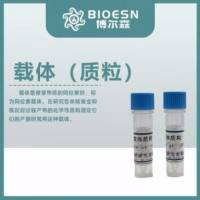Transgenic and Knockout Mice PROTOCOL
互联网
1077
- DNA Preparation for microinjection or electroporation
- Pronuclear injection to produce transgenic mice
-
Morula Aggregation to produce chimeric mice
Transgenic identification
- PCR of DNA from ear clip tissue
-
Genomic Southerns of DNA from tail clips
Animal Protocols
- Obtaining a University approved animal protocol
- Mating transgenic mice
DNA Preparation for Microinjection or Electroporation
This protocol was developed by Jan Parker-Thornburg at The Ohio State Universtiy
1)Run the DNA digest on an agarose gel:
- Make a 1% Seaplaque (or other very high quality) Low melt agarose gel using 1X TAE prepared according to Maniatis (no EtBr).
- Load the gel with markers on the end separated from the digest of interest by 1 lane. (load the DNA at a concentration of no more than 200 ng/lane--otherwise you run the risk of trapping fragments that you don't want in the band of interest. )
- Run the gel slowly: 30-40 mAmps.
- Once the run is completed, stain the gel with a fairly low concentration of EtBr (about 1µg/ml) for 10 min keeping the gel in the dark.
- When finished staining, visualize gel using longwave UV, and cut the band of interest.
2) Purifiying the DNA fragment.
- Load about 200-300µg of the gel cut onto a GeneClean spin column(BIO 101'S GeneClean Spinkit)--usually a fragment will require 6-8 columns to take care of all the gel.
- Prior to adding the fragment-laden gel pieces, add 500µl of glassmilk.
- Once the gel is in the tube, melt at 55o C for 5 min (flicking the tube at least every 1 and 1/2 minutes).
- Then, spin out the solution for 30", wash 2X with NEW wash, spinning 30" each time, dry the filter by spinning for 1'.
- Elute the fragment by using 10-20µl of elution buffer, incubating at 37o C for 5 min (flick the tube at least 2X in that period), spinning down, and then repeating to get any remaining DNA.
- Precipitate the DNA overnight, using 3MTris pH 7.4 or ammonium acetate as the salt. If 3M Tris is used, incubate overnight at -20o C. If ammonium acetate is used, incubate overnight at room temp.
- Then, do 2 X 70% EtOH washes.
- Resuspend in whatever volume looks like is appropriate.
This method of prepping fragments is proving to be a really reliable and clean method. I have used it on pieces as large as 18 kB (that't the reason I went to spin columns in the first place). The spin columns are simply a GeneClean kit with a filter to catch any residual glass beads. The literature that they send says that the columns are good for DNA from .2-200kB.
Back to PROTOCOLS
Pronuclear Injections:
Egg Production for injections
To obtain a large quantitiy (>250) of eggs for injection, sexually immature FVB/N females (4-5 weeks of age) are superovulated by using consecutive PMS and HCG hormone injections. Females are mated to stud males immediately following the HCG injection.
Harvesting the eggs
Eggs are harvested the next day from the ampulla of the oviduct of the mated females. Eggs are treated with hyaluronidase to remove nurse cells, and are then washed through several dishes of M2 media. Fertilized eggs are then stored in M16 media at 37o C and in 5% CO2 until injection.
Injecting the eggs
30-50 eggs are removed from the incubator at a time for injection. Each egg is individually injected with the DNA fragment of the day under high magnification. When each egg in that group has been injected, all the eggs are returned to the incubator. This procedure is repeated until all eggs have been injected. At the end of the injection period, eggs which have not survived injection are removed from each group.
Implanting the eggs
Injected eggs are then implanted in groups of 10-15 bilaterally into the oviduct of pseudopregnant females (females which have been mated to vasectomized males). The animals are allowed to recover from anaesthesia on a warming plate, and then returned to the animal room. They are kept under sterile conditions throughout their pregnancy.
Back to PROTOCOLS
Morula Aggregation:
This technique has been beautifully described by Andras Nagy (one of the developers of the technique) in his web page. Click on his name to go there.
Back to PROTOCOLS
PCR for Determination of Transgenic Mice
This protocol was developed by Jon Neumann at the University of Cincinnati
- Ear clip the mouse. Take the tissue and put into a microcentrifuge tube. Clean off clippers carefully between animals.
- Digest each clip in 100 µl of 1XPCR buffer with added detergents (0.45% NP40, 0.45% TWEEN 20) and 10µl Proteinase K (10 mg/ml) @ 60o C for 2 hrs. to overnight. If using a short incubation time, vortex several times during the incubation.
- Denature the Proteinase K by boiling for 15 min. (DO NOT BOIL FOR ANY LESS THAN 10 min.; Reboil prior to any subsequent analysis). Cool on ice for 5 minutes.
- Aliquot 18 µl of PCR reaction buffer into a PCR tube
- PCR Reaction Buffer
- Add 2 µl of ear digest to the tube; mix by pipeting.
- Overlay with 30-40 µl light mineral oil (if not using hot top PCR machine)
-
Put into cycler and run the following program:
- Hold @ 94o C for 4.5 min.
- 30 X Step cycles of: 94o C for 30 sec.
- required annealing temp. for 20 sec. (varies according to G/C content of primers)
- 72o C for 1 min.
- Hold @ 4o C until ready to analyze.
- Add 2 µl of agarose dye mix to each tube, and load all onto a 1.5-2% agarose gel.
Back to PROTOCOLS
Tail DNA Preps for Genomic Southerns
This protocol was developed by Arun Subramaniam from Proctor and Gamble
Digestion of the tail clip:
- Cut about 50-100 mgs of tail into an eppendorf tube containing 500 µl of tail prep solution:
- Incubate at 600 C overnight (or until digestion is complete)
- Add 0.5 ml phenol, mix well, spin for 10', 10,000 rpm at room temperature.
- Remove aqueous phase. To the aqueous phase, add 0.5 ml phenol/chloroform, mix well, then spin for 10', 10,000 rpm, room temperature.
- Remove aqueous phase. To the aqueous phase, add 0.5 ml chloroform, mix well, spin for 5', 10,000 rpm, room temperature.
- Remove aqueous phase. To that phase, add 0.5 ml cold 95% EtOH. Mix well. You will see a white ball of ppt form. That is the genomic DNA.
- Spool out DNA with pipette tip. (You actually dig this out with the tip, rather than spooling it).
- Rinse DNA in 70% EtOH (Cold), and then 95% EtOH (Cold). Air dry and dissolve in 200µl TE
- Use 2 µl of DNA solution for estimation of concentration.
Restriction digests of genomic DNA:
- -use 10µg of DNA in a total volume of 300µl.
- -allow water, buffer and DNA to sit together 10-15 minutes at 37o C prior to adding enzyme.
- -digest the DNA > 7 hours
- -precipitate the DNA with 2 volumes of EtOH (best to do overnight)
- -spin, then wash with 70% EtOH
- -dry, then resuspend in 18µl of water
- -heat the DNA at 65o C for about 10' prior to loading on the gel
- -add 2µl of gel loading dye
- -run the gel slowly (about 4V/cm)
Back to PROTOCOLS
Obtaining a University Approved Animal Protocol
Prior to performing any transgenic work, we require the investigator to have an IACUC approved animal protocol. Information regarding the procedures for obtaining the protocol can be accessed using the ULAR web page--just click on the highlighted ULAR.
Back to PROTOCOLS
Mating Protocol
-
Determine the age of your mice.
Mice will usually not breed if they are younger than 4 weeks old. Similarly, mice who have been housed alone or in pairs (with the same sex) will usually not breed if they are older than 6-8 months old. On occasion, older mice will breed successfully, but the females can also have significant problems with delivering live pups, and nursing them appropriately. As a suggestion, if housing mice long term where there is a chance that you may need to breed them in the future (such as to keep the line going), you will want to breed them at least once prior to 6 months of age. The pups from this breeding may be sacrificed if not needed. This will help when future breeding is attempted. Remember, old mice are a lot like old people. As they age, the quality and quantity of both sperm and eggs decrease. Not only are there physiological changes, but there are temperament changes as well. They can become grumpy old mice. - Set up breedings only when you know that the mice will be supervised carefully during the next day. On occasion, the mice will fight after breeding, and can inflict serious wounds that could be fatal without prompt attention. Thus, mice should not be bred on Fridays or Saturdays or on Sunday on a long weekend.
- To breed, put the female into the male's cage. Reversing this order can result in the male killing the female (or, on rare occasions, the female killing the male). If it is not possible to put the female into the male's cage, use a clean cage, and put the male in the cage first. If this can be done one week in advance of the anticipated mating, this will allow the male to mark his territory, and the pheremone level to rise, which will aid in the breeding process.









